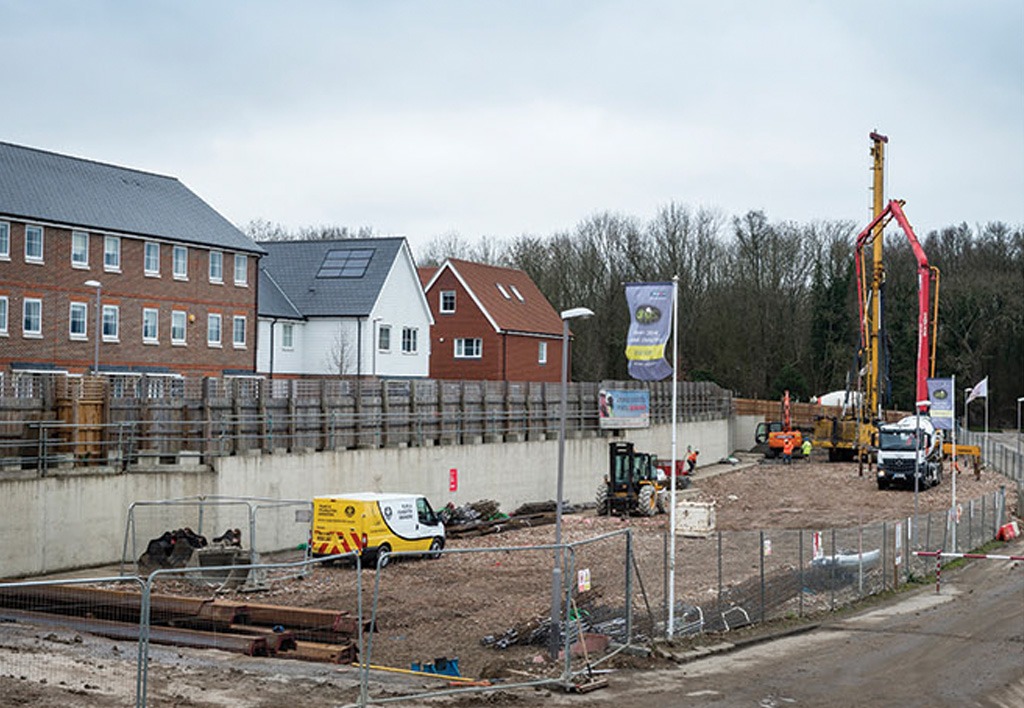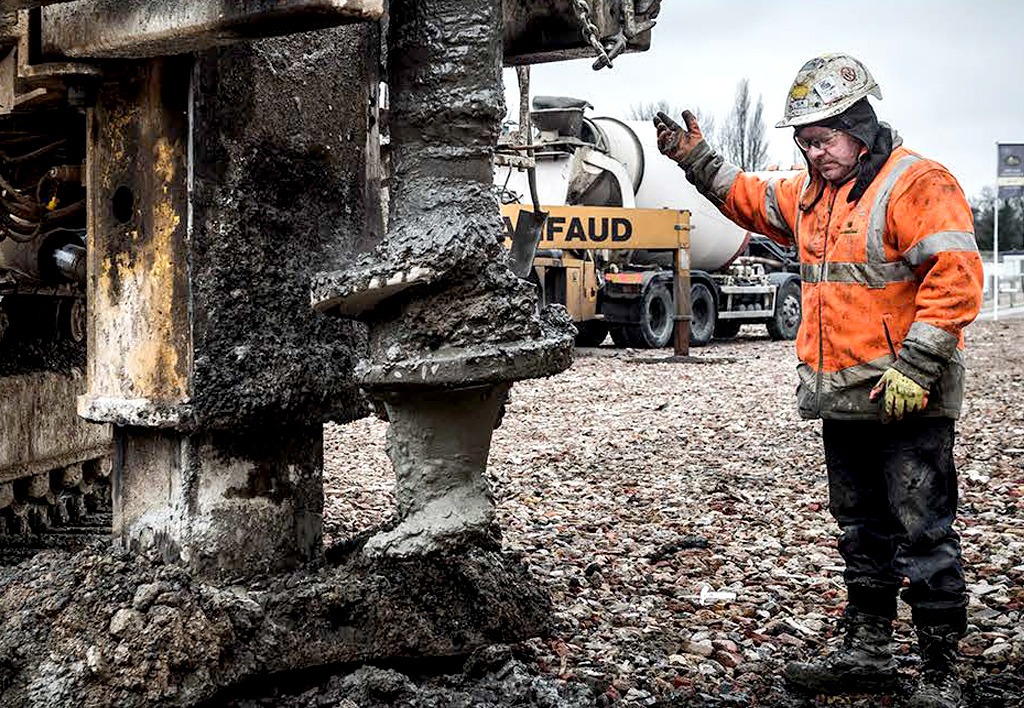PROJECT BRIEF
Foundation Engineers Roger Bullivant Limited (RB) secured the contract for several phases of Continuous Helical Displacement (CHD) piling and Vibro Stone Column (VSC) works for the prestigious Ryewood development in Dunton Green, Sevenoaks for Berkeley Homes (Eastern Counties) Limited. The different phases comprised a mixture of low rise (3 to 4 storey) residential development, consisting of 2 and 3 bedroom apartments and 3, 4 and 5 bed luxury town houses offering modern contemporary living. The development is located next to the Sevenoaks wildlife reserve and in close proximity to Dunton Green station.
KEY ISSUES
Due to the planning restrictions and nature of the made ground across the site, an augered solution could not be adopted, therefore only displacement solutions producing minimal spoil could be employed.
Variable depths of made ground across proportions of the site, where backfilled pits were present. The nature of this made ground also varied considerably across the site.
Installation of CHD piles adjacent to a working railway for a significant proportion of the first phase undertaken by RB.
Due to the presence of a primary aquifer underlying the gault clay, and the limits imposed by the EA, pile lengths were limited to 10.0m on the initial phase as the primary aquifer was at a shallower depth below this section of the site. Pile lengths on other phases were limited but not to such an extent.
SOLUTION
The RB solution comprised multiple techniques; our patented augered displacement system known as Continuous Helical Displacement, ground improvement in the form of Vibro Stone Columns and Sectional Flight Auger piles for areas of restricted access. A total of 1438 no. 300/600mm CHD piles, 22 no. 400/700mm CHD piles, 4 no. SFA piles and VSC’s to 32 no. plots were installed in several phases over a number of years.
Where possible to employ, VSC’s as a form of ground improvement are normally more cost effective than a piled solution depending on suitable settlement criteria. Due to variability in both the nature and depth of the made ground VSC’s were adopted on 32 no. plots. The ground improvement scheme was designed to provide a maximum available bearing capacity of 100kN/m2 beneath the foundations at a minimum depth of 600mm below the working level. Stone columns were installed to depths of between 3.0m and 4.0m across the plots. The vibrating poker was driven to refusal, and the resulting bore was filled with a clean natural aggregate (75mm – 40mm size range) and compacted in stages.
For the other plots where higher bearing pressures would be required (for example the apartments) or in areas of deeper/unsuitable made ground, the RB CHD system was utilised. Another contractor had previously attempted to install a different augered displacement pile with limited success. RB stepped in to demonstrate not just the effectiveness of our CHD system but the capabilities of our bespoke in-house designed and built plant.
The CHD system uses a flighted boring head on the end of a high torque tube in conjunction with powerful bespoke rigs to displace soil during installation. The boring head is rotated at a set number of revolutions per metre during extraction whilst simultaneously pumping concrete through to the base of the boring head. This produces the distinct screw shape and enhanced design parameters. The result is a highly efficient, cost effective pile that produces minimal spoil during installation.
RB installed just under 800 piles along the stretch of site closest to the running railway and a section of the piles in this phase were located within metres of network railway land. RB proposed a restricted zone in which limits were set on how the rig was allowed to manoeuvre. A bespoke specific method statement was produced and passed to Berkeley Homes for them to gain network rail approval. The method of work was approved without issue.
An on-site substation requiring 4 no. piles was located in a tight corner where the restrictions on the CHD rig meant that these piles would need to be installed using a restricted access machine. The piles were successfully installed by the RB Klemm 709 utilising the Sectional Flight Auger (SFA) method.
The RB CHD system has the advantage of both enhanced design parameters and a more efficient concrete to design diameter ratio, due to the shape of the formed pile. The result allowed RB to successfully design piles for the predetermined capacities, without issue, for the initial phase where the maximum pile length was limited to 10.0m.





